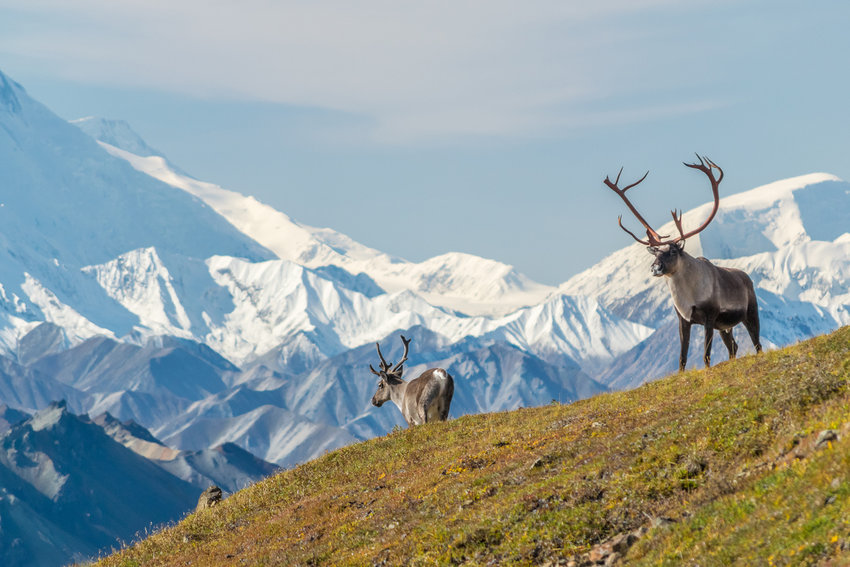We love our National Parks, especially in warm, summer months when the sun is shining, and the days are longer. Unfortunately, a trip to a National Park during peak summer months also means competing with crowds, paying high prices for lodging and sharing the trail with the masses.
But when snow starts to fall in our wildest places, fewer people flock to the outdoors. And we get it, winter brings short, cold, unpredictable days, road closures, and fewer accommodations. But before you put your National Park adventure plans on hold for the winter, you should know that there are still plenty of opportunities to explore our National Parks during winter months. In fact, winter is arguably one of the best seasons to beat the crowds and watch your favorite park transform into a serene winter wonderland.
There's never really a wrong time to visit one of our National Parks, but these 10 National Parks will truly take your breath away this winter.
Yosemite National Park
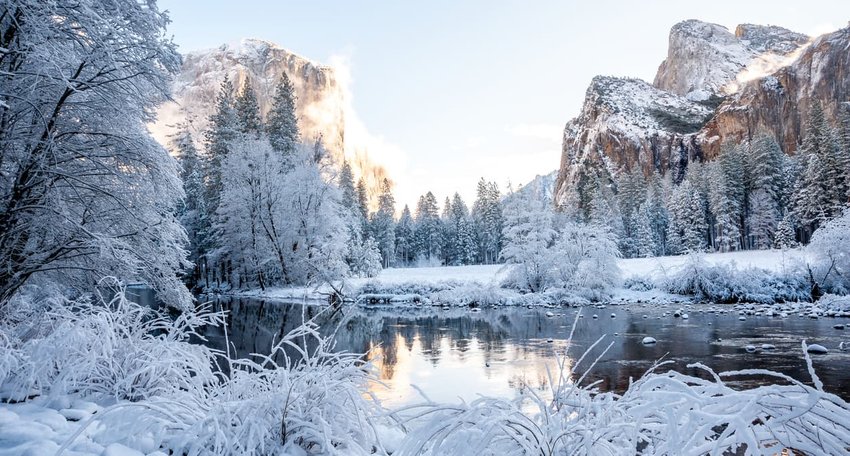
We’re going to let you in on one of California’s best-kept secrets: Winter in Yosemite. As snow starts to fall in Yosemite Valley and high-elevation roads close for the season, the heavily congested summer months become a distant memory. Winter in Yosemite National Park brings silence, solitude, and ample opportunities for peaceful winter recreation.
Ice-skate beneath one of Yosemite’s most iconic landmarks, Half Dome, from mid-November to March at the Half Dome Village Ice Skating Rink or grab a camera and take a scenic stroll through Yosemite Valley, where granite monoliths and meadows are covered in snow and ice.
Head to higher elevations and take advantage of miles of perfectly groomed trails and slopes at Yosemite Ski & Snowboard Area (formerly Badger Pass). Here, you’ll find ample opportunities for downhill, backcountry and cross-country skiing, as well as snowshoeing and tubing.
Denali National Park
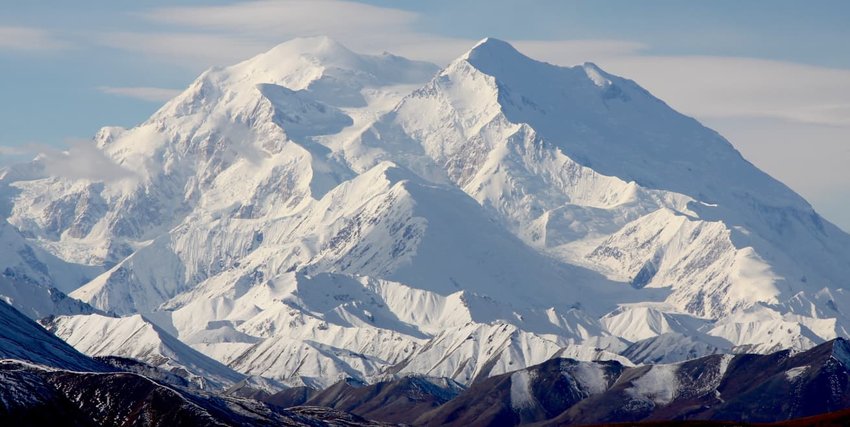
A winter trip list wouldn’t be complete without the country’s wildest, most remote wilderness: Alaska. Alaskan adventurers head north into Denali during winter months for a chance to experience the extraordinary aurora borealis, take advantage of winter recreation opportunities, and take part in Winterfest, a festival that celebrates Alaska’s longest season, winter.
Snow starts to blanket the rugged Denali National Park wilderness as early as September and usually sticks around until April or May. However, unlike other parks, cross-country skiing, hiking, winter biking and snowshoeing aren’t the only ways to explore Denali National Park.
Sled dogs play a critical role in Denali’s history, and nothing says “welcome to Alaska” quite like exploring the park via dogsled. Alaskan locals often take their own dog team and hit the trail unaccompanied, but if you don’t own your own dogs, you can book a guided Denali Dog Sled Expedition to explore mountain passes and glaciers that are unique to winter months.
Mt. Rainier National Park

How many people can say they’ve skied on a volcano? During winter months, Mt. Rainier’s subalpine meadows and pristine valleys transform into the perfect winter recreation playground.
Start your day at Washington’s largest downhill ski area and world-class ski resort, Crystal Mountain Resort. When you’re ready to kickstart your adventure, travel nearly 2,500 vertical feet to the summit of Crystal Mountain via the Crystal Mountain gondola and experience breathtaking views of Mt. Rainier and the Cascade Range. With over 2,600 skiable acres and 57 named runs to choose from, there’s plenty of incredible terrain to explore.
For a more leisurely activity, spend time in the snowplay area at Paradise, a popular destination for sledding and tubing, or take a ranger-led snowshoe walk to learn about park plants and inhabitants in winter months.
Yellowstone National Park
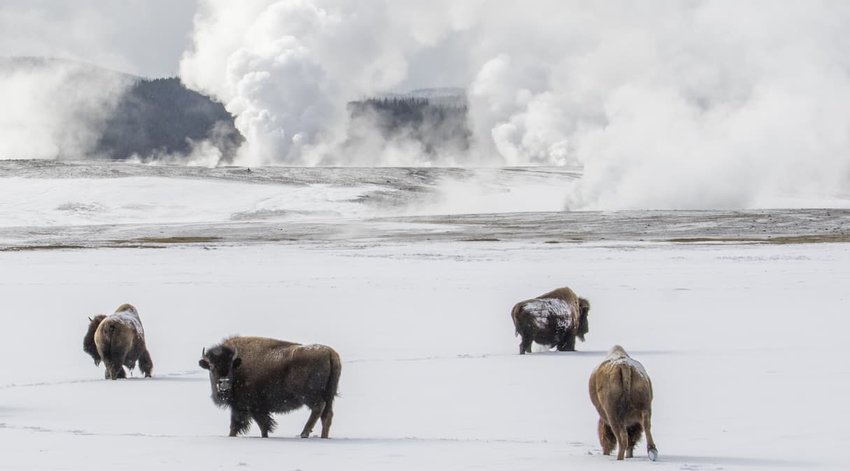
Geysers, bison, elk, oh my! Beat the crowds and experience one of the country’s most visited parks, Yellowstone National Park, as few others ever will.
During winter months most roads in the park close and snowcoaches, snowmobiles, skis, and snowshoes become the primary method of transportation. In fact, after heavy snowfall, roads are open to ‘oversnow’ travel only, making a trip to famous park icons an adventure in and of itself.
Yellowstone offers miles of cross-country skiing trails and ski skate routes through frosted woods and snow-covered meadows, as well as snowmobiling excursions to Old Faithful and other park highlights. Because visitors rarely venture to Yellowstone in the winter, you can expect to enjoy the natural beauty of America’s first national park and its abundant wildlife, in complete solitude.
Rocky Mountain National Park
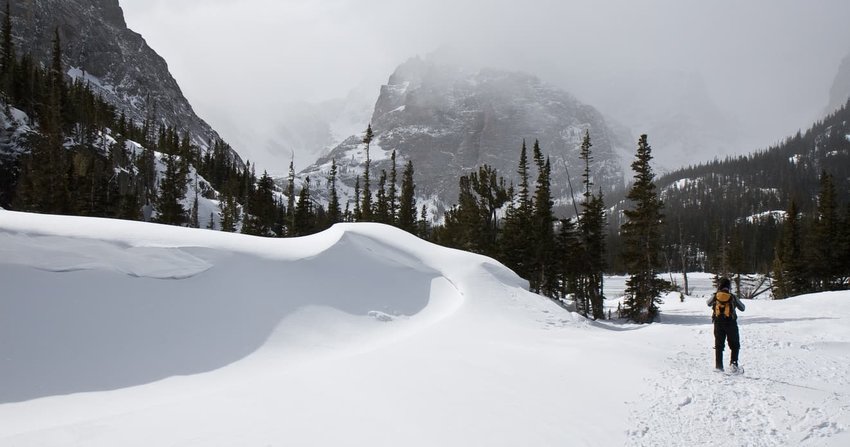
Colorado is a well-known winter recreation destination. Make your offseason adventure plans complete with a winter trip to the Rockies. At a lofty elevation of 7, 500-feet, Rocky Mountain National Park is the perfect base camp for winter recreation.
You can rent or bring along snowshoes, microspikes, and cross-country skis to traverse some of the park’s most incredible trails, like Deer Mountain, Dream Lake, Cub Lake, and Bear Lake Loop. Or, for a more low-key winter activity, make the trip to Kawuneeche Valley for some quiet time observing wildlife like Moose and Bighorn sheep, or spend the afternoon tubing or sledding at Hidden Valley.
Keep in mind, if you plan to do any backcountry skiing, the park does not do any avalanche control. We recommend that you always check trail conditions and avalanche activity, before hitting the trail.
Zion National Park
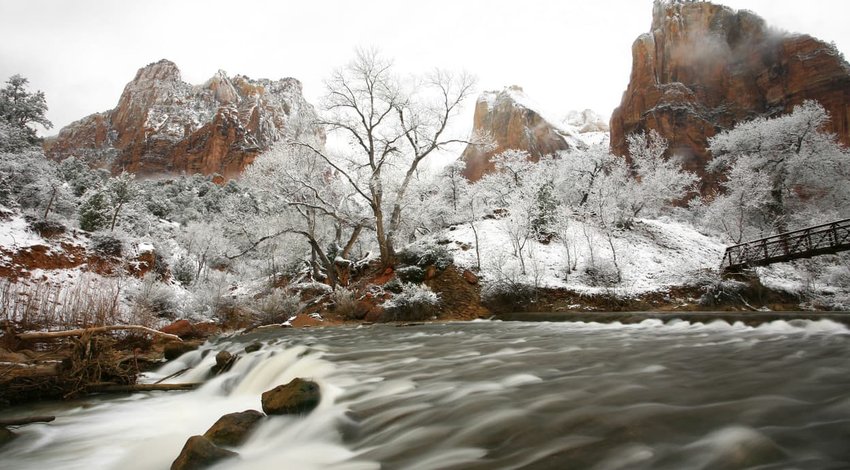
If you’re looking for winter, but you don’t want to freeze, Zion is the park for you. Although temperatures do plummet in winter months, Zion’s winters are considered mild in comparison to other winter destinations; so much so, that it’s not unusual to be able to shed extra layers for a winter hike in the park.
With the park’s shuttle suspended until mid-March, you have the luxury of driving your own car up the park’s scenic road. Stop at any or all of the park’s picturesque turnouts to take in otherworldly views of incredible sandstone cliffs.
Although the park’s low elevation generally keeps snow from accumulating on the valley floor, park icons, like the Watchman, are frequently dusted in snow, and higher-elevation trails may receive patches of ice and snow. The East Rim Trail to Observation Point and other iconic trails like Weeping Rock, Emerald Pools, and even Angels Landing are not only accessible, but are much less crowded during winter months.
Glacier National Park

The famed Going-To-The-Sun road may close to motor vehicles as winter weather hits the Rocky Mountains, but as snow accumulates in Glacier National Park, snowshoeing and cross-country skiing become the highlight of the park.
Nearly devoid of visitors in winter months, traveling to Glacier for winter recreation means you’ll have the unique opportunity to experience this ice-covered wonderland in relative solitude. Strap on your skis and traverse the most popular ski terrain in the Park, Going-To-The-Sun road, take a ranger-led snowshoe adventure in the Apgar area, or access a variety of other popular multi-use trails outlined by the National Park Service.
You may not find luxury accommodations available within the park, but there is no charge for camping in the winter!
Crater Lake National Park
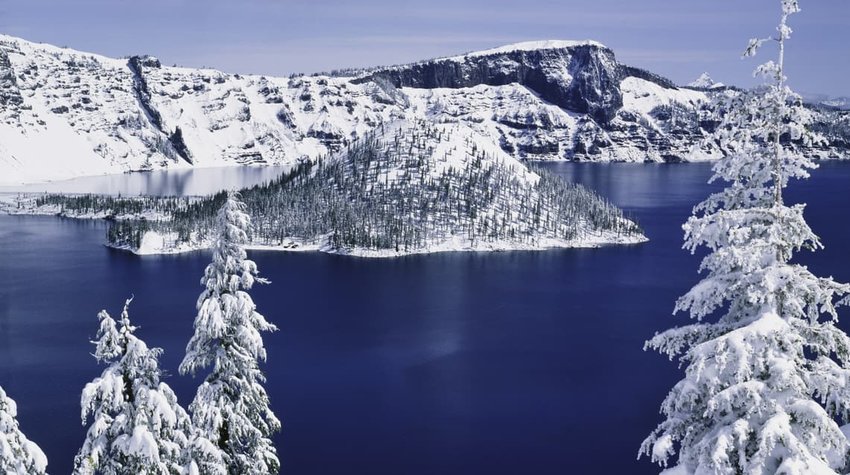
Silence falls on Crater Lake as seasonal road closures and 44 inches of snow deter the masses from visiting Crater Lake National Park. But for those looking for a winter adventure, from mid-October to early June, Crater Lake turns into a hub for winter recreation, primarily snowshoeing and cross-country skiing.
Drop by the Steel Information Center or the Rim Village Café and Gift Shop to catch your first glimpse of the deepest lake in the United States; These are the only facilities accessible by car.
Once inside the park, strap on your snowshoes and hit the trail. The Garfield Peak trail will take you to one of the high points along the crater’s rim, while the Discovery Point Trail will parallel the infamous Rim Drive. If you’ve never been snowshoeing before, take advantage of a guided snowshoeing adventure with a ranger. Snowshoes are provided, free of charge, and no previous experience is necessary.
Bryce Canyon National Park
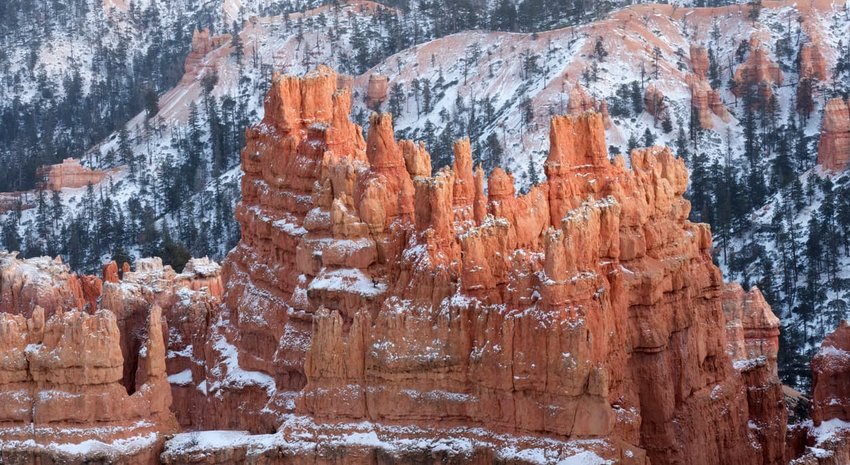
This winter destination goes out to all of you stargazers out there. Aside from Bryce Canyon’s amazing snow-dusted red and orange hoodoos, in winter months the park becomes the perfect place for a peaceful night spent staring at the galaxy.
Join a 1-2-mile ranger-led full moon snowshoe hike, offered November through March, or participate in a special stargazing show. If you’re ready to hit the trail, you can enjoy several cross-country skiing trails, including portions of the popular Rim Trail, that traverse the canyon rim from above. Major roads, like Fairland Road and Paria View Road, are left unplowed so you can snowshoe or ski throughout the park.
Winter isn’t the most popular season to explore the park so you can expect fewer crowds at popular viewpoints, easy access to photo ops, and lower rates at luxury resorts.
Grand Teton National Park
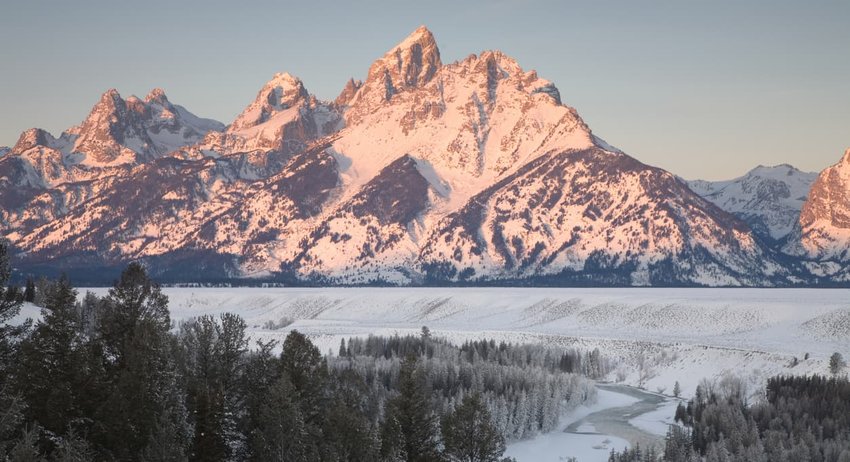
Jackson locals will tell you that Grand Teton National Park is the perfect place to appreciate a quintessential Wyoming winter.
Hit the trail and cross-country ski under the park’s incredible towering peaks or along iconic park roads, take a ranger-guided snowshoe hike from the Taggart Lake Trailhead, or pedal around the park on fat-tire bike. Without the commotion and crowds of summer months, the park takes on an entirely new identity. In fact, if you’re lucky, you might actually catch Jackson Hole locals playing an impromptu game of hockey on Delta Lake!
Before you travel to the park, we recommend that you take a look at information on cross-country skiing and snowshoeing for more information on trails and safety tips during winter months.
As with any winter adventure, we recommend that you plan your trip well in advance and check in with the National Park Service before traveling to a National Park during winter months. Weather, trail, and road conditions are unpredictable, so don’t forget to pack your patience and spontaneity when venturing into the wild this winter!

